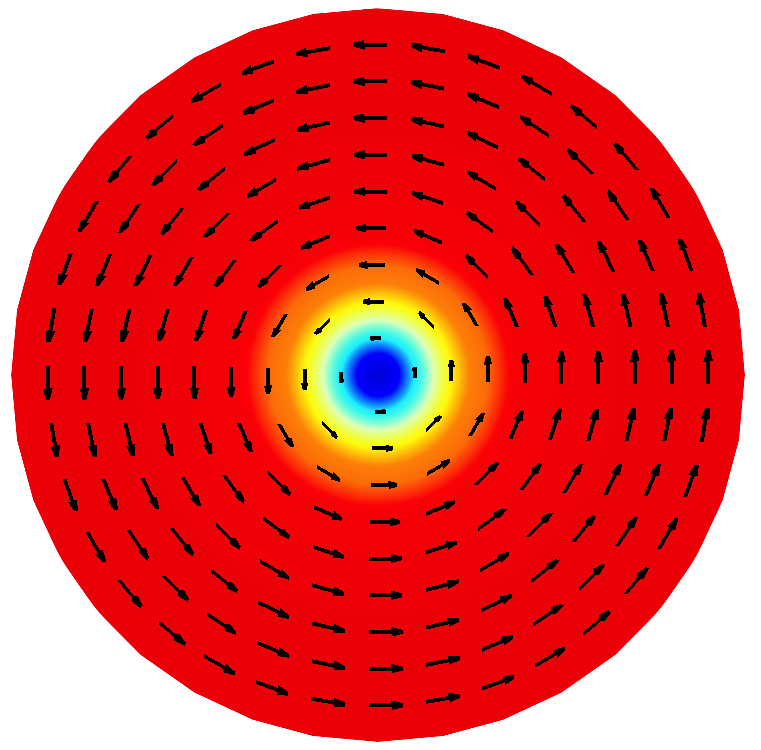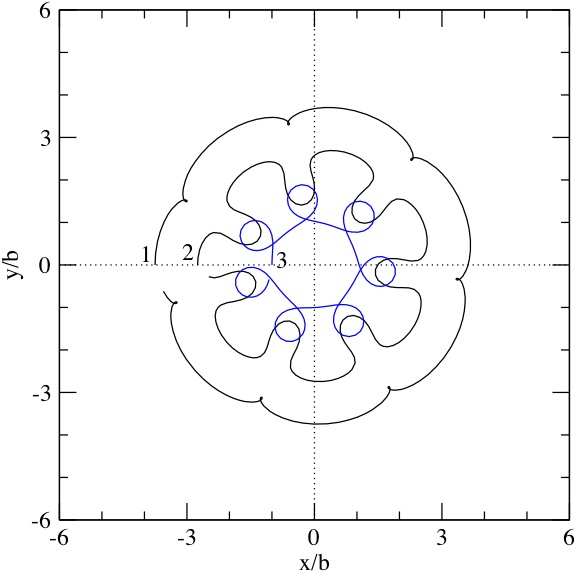Magnetic vortices

Vortex-antivortex pairs
A vortex together with an antivortex form an interacting pair that is localized and has finite energy. A vortex-antivortex pair is thus, surprisingly, a more natural object from a physical and experimental point of view. We have studied theoretically the dynamics of vortex-antivortex dipoles, that is, a vortex together with an antivortex with opposite polarities. By exploiting a link between their topology and their dynamics we find that magnetic vortex-antivortex dipoles are in rotational motion, in stark contrast to vortex-antivortex pairs in fluid dynamics. [Phys. Rev. Lett. 2007].
When we include spin-transfer torque due to a spin-polarized current or the spin-Hall effect, we predict stable magnetization oscillations of the vortex-antivortex dipole due to a totally surprising cooperation of (conservative) Hamiltonian dynamics and of (non-conservative) spin torque forces [Europhys. Lett. 2012].
- The vortex dipole acts as a microwave frequency generator at the nanoscale. Observations of such magnetisation oscillations, reported in [PRB 78, 174408 (2008)], had motivated our work.
- The system gives interesting theoretical and mathematical results, e.g., the asymptotic analysis of a rotating vortex dipole [Physica D, 2015].
- We propose vortex-antivortex pairs as advantageous structures which can, at the same time, be used as stable units for information storage (due to their topological structure) and also in logic operations (due to their dynamical behaviour) [Sci. Rep. 2015].
Presentation
- A review on magnetic vortex-antivortex pairs.
- Talk on "Rotating vortex-antivortex dipoles in ferromagnets under spin-polarised current", SIAM conference on Mathematical Aspects of Materials Science, Philadelphia, 10/6/2013.
